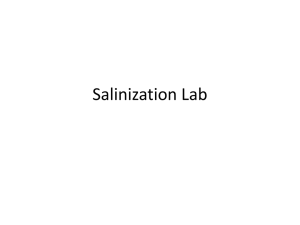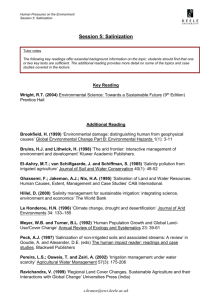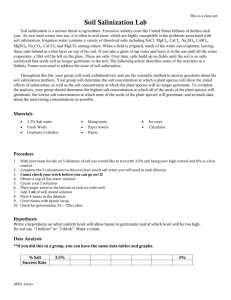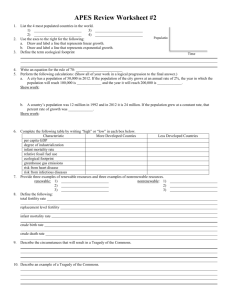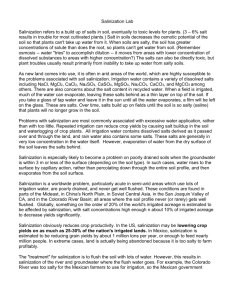Estimatimg Aquifer Salinity from Airborne Electromagnetic Surveys
advertisement
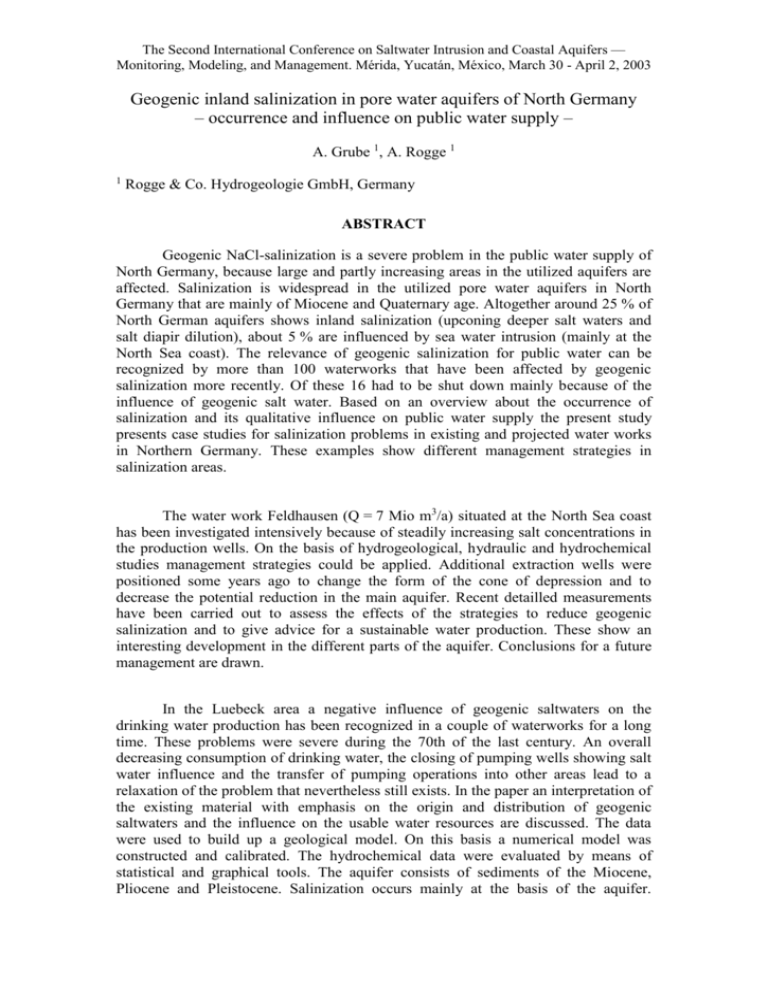
The Second International Conference on Saltwater Intrusion and Coastal Aquifers — Monitoring, Modeling, and Management. Mérida, Yucatán, México, March 30 - April 2, 2003 Geogenic inland salinization in pore water aquifers of North Germany – occurrence and influence on public water supply – A. Grube 1, A. Rogge 1 1 Rogge & Co. Hydrogeologie GmbH, Germany ABSTRACT Geogenic NaCl-salinization is a severe problem in the public water supply of North Germany, because large and partly increasing areas in the utilized aquifers are affected. Salinization is widespread in the utilized pore water aquifers in North Germany that are mainly of Miocene and Quaternary age. Altogether around 25 % of North German aquifers shows inland salinization (upconing deeper salt waters and salt diapir dilution), about 5 % are influenced by sea water intrusion (mainly at the North Sea coast). The relevance of geogenic salinization for public water can be recognized by more than 100 waterworks that have been affected by geogenic salinization more recently. Of these 16 had to be shut down mainly because of the influence of geogenic salt water. Based on an overview about the occurrence of salinization and its qualitative influence on public water supply the present study presents case studies for salinization problems in existing and projected water works in Northern Germany. These examples show different management strategies in salinization areas. The water work Feldhausen (Q = 7 Mio m3/a) situated at the North Sea coast has been investigated intensively because of steadily increasing salt concentrations in the production wells. On the basis of hydrogeological, hydraulic and hydrochemical studies management strategies could be applied. Additional extraction wells were positioned some years ago to change the form of the cone of depression and to decrease the potential reduction in the main aquifer. Recent detailled measurements have been carried out to assess the effects of the strategies to reduce geogenic salinization and to give advice for a sustainable water production. These show an interesting development in the different parts of the aquifer. Conclusions for a future management are drawn. In the Luebeck area a negative influence of geogenic saltwaters on the drinking water production has been recognized in a couple of waterworks for a long time. These problems were severe during the 70th of the last century. An overall decreasing consumption of drinking water, the closing of pumping wells showing salt water influence and the transfer of pumping operations into other areas lead to a relaxation of the problem that nevertheless still exists. In the paper an interpretation of the existing material with emphasis on the origin and distribution of geogenic saltwaters and the influence on the usable water resources are discussed. The data were used to build up a geological model. On this basis a numerical model was constructed and calibrated. The hydrochemical data were evaluated by means of statistical and graphical tools. The aquifer consists of sediments of the Miocene, Pliocene and Pleistocene. Salinization occurs mainly at the basis of the aquifer. Higher parts of the aquifer show salinization in exfiltration areas. The numerical model was used to reconstruct the diverse flow patterns of the region during the last centuries. The hydrochemical data give valuable hints for the hydrogeological model. The evaluation of the hydrochemical data show distinct patterns of salinization and give hints at their origin. Geogenic salinization is due to upconig of deeper brines, subrosion waters and the intrusion of sea water. Mixing of different water types are discussed in relation to the results of the groundwater model. References Grube, A., “Widespread geogenic salt water occurence in North Germany demonstrated on the basis of a generalized map”, Nicholas Copernicus University, 80 (2000), 55-62, Torun, 2001 Grube, A., Wichmann, K., Hahn, J. & Nachtigall, K.H., „Geogene Grundwasserversalzung in den Lockergesteins-Grundwasserleitern Norddeutschlands und ihre Bedeutung für die Wasserwirtschaft“- Veröff. Technologiezentrum Wasser Karlsruhe 9, 1-203 (Karlsruhe), 2000. Rogge, A. & Josopait, V., “Salinization caused by groundwater abstraction from an aquifer on the German North Sea coast”, In: Proc. 12th Saltwater Intrusion Meeting, CIMNE, pp. 703-713 (Barcelona), 1993. Keywords: Geogenic NaCl-salinization, hydrochemistry, numerical modeling, groundwater management Corresponding author: Alf Grube and Axel Rogge, , Drs., Rogge & Co. Hydrogeologie GmbH, Carl-Zeiss-Str. 2, 30827 Garbsen, Germany. Email: info@rogge-hydro.de 2
